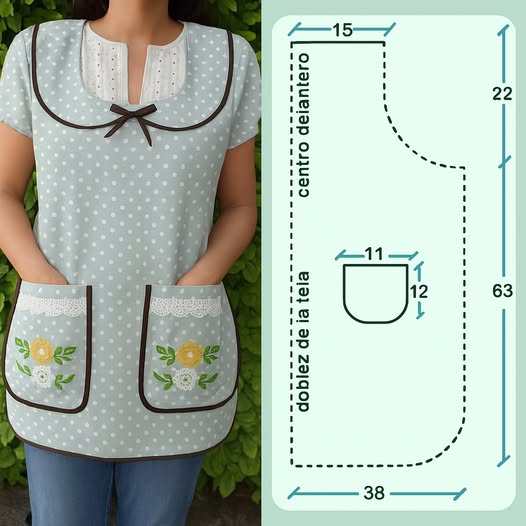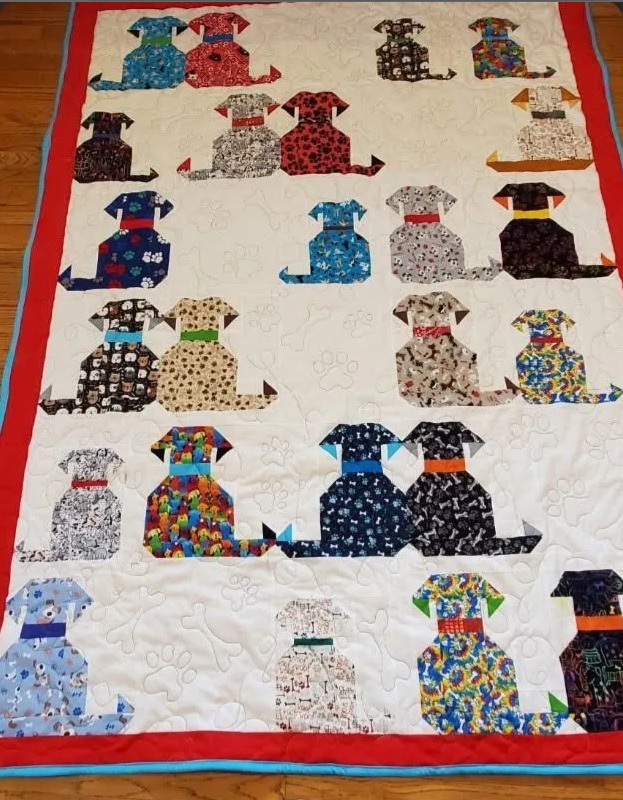The Learn how to make a kitchen apron – Pattern project is a fun and practical way to combine creativity with functionality. Aprons have long been a staple in kitchens, protecting clothing from spills and stains while adding a touch of personal style. Whether you are a beginner or an experienced sewist, making your own apron gives you the freedom to customize the design, fabric, and fit.
Working on the Learn how to make a kitchen apron – Pattern can also save money while giving you a unique piece that reflects your personality. Instead of purchasing ready-made aprons, sewing your own allows you to use fabrics you already have at home or to experiment with bold prints and colors. Plus, it’s a project that doesn’t take too much time, making it perfect for quick weekend crafting sessions.
Beyond its practicality, the Learn how to make a kitchen apron – Pattern activity is also a great gift idea. Handmade aprons can be personalized for friends, family, or special occasions like Mother’s Day, birthdays, or holidays. With a little creativity, you can create something that is both useful and deeply meaningful, ensuring that your effort is appreciated for years to come.

Materials and Tools Needed to Learn how to make a kitchen apron – Pattern
To successfully complete the Learn how to make a kitchen apron – Pattern project, you will need to gather the right materials. Fabric is the most important choice. Cotton is the most common option since it is durable, easy to clean, and comfortable to wear. For a professional look, consider heavier fabrics like canvas or denim.
Next, you’ll need thread that matches or complements your fabric. Strong, high-quality thread ensures that your apron will last through regular washing and daily use. Neutral colors like white, black, or beige often work best, but matching threads can create a seamless finish.
Scissors are essential, and fabric scissors are highly recommended because they cut cleanly through material without fraying. Using proper scissors ensures precision when cutting your apron pieces according to the pattern.
A sewing machine will speed up the process, but hand-sewing is also an option for those who enjoy detailed work. If you choose to use a machine, make sure it is threaded properly and adjusted to suit your chosen fabric weight.
Pins and measuring tools are also necessary. A fabric ruler or measuring tape helps keep measurements accurate, while pins hold the pieces in place before sewing. Precision in this step makes a huge difference in the final fit and finish of your apron.
Lastly, you may want to add extras such as pockets, trims, or decorative buttons. These additions personalize your Learn how to make a kitchen apron – Pattern project, making it truly unique to your style and needs.
Step-by-Step Guide to Learn how to make a kitchen apron – Pattern
The first step in the Learn how to make a kitchen apron – Pattern project is to take accurate body measurements. Measure the width across your chest, the length from chest to thigh, and the desired strap lengths. These will help ensure the apron fits comfortably.
Next, cut the fabric according to your measurements. A simple apron typically requires one main rectangular piece for the body, with two long strips for the waist ties and one for the neck strap. Use chalk or fabric markers to outline your pattern before cutting.
After cutting the main body, hem the edges to prevent fraying. Fold the edges in about half an inch, press with an iron, and sew around the perimeter. This step not only secures the edges but also gives the apron a neat and polished look.
Now, attach the waist ties. Pin each tie to the sides of the apron at waist height and sew them securely. Make sure the ties are long enough to wrap comfortably around the waist for adjusting.
The next step is to attach the neck strap. Depending on preference, you can sew one continuous strap or create adjustable ties. If you prefer adjustability, adding a buckle or D-ring makes it easy to change the fit.
Finally, add optional features like a pocket. Cut a small rectangle of fabric, hem the edges, and sew it to the front of the apron. This pocket can be used to hold utensils, recipe cards, or other small kitchen items. With these steps complete, your Learn how to make a kitchen apron – Pattern project will be ready to wear.
Creative Ideas for Learn how to make a kitchen apron – Pattern
The Learn how to make a kitchen apron – Pattern project offers endless creative possibilities. One simple idea is to use patterned fabric to add personality. Florals, stripes, or seasonal prints can make the apron fun and stylish while still being functional.
Another option is to add decorative trims or lace. This small detail can elevate a plain apron into something elegant and special, perfect for hosting dinner parties or festive occasions.
You can also experiment with pocket designs. Instead of one large pocket, try adding multiple smaller ones for better organization. Pockets shaped like hearts, circles, or themed cutouts can make the apron extra unique.
For those who love embroidery, stitching names, quotes, or small designs onto the apron adds a personal touch. This works especially well if you’re making the apron as a gift, since personalization shows thought and effort.
Recycling fabric is another creative approach. Old tablecloths, jeans, or bedsheets can be repurposed into aprons, making the project eco-friendly and budget-friendly. It’s a wonderful way to give new life to unused fabric.
Lastly, consider making themed aprons for holidays. A Christmas apron with red and green fabric, a Halloween apron with fun prints, or a Valentine’s apron with heart designs can bring festive cheer to your kitchen. Each variation keeps the Learn how to make a kitchen apron – Pattern project exciting and versatile.
Tips and Tricks for Success with Learn how to make a kitchen apron – Pattern
One important tip for the Learn how to make a kitchen apron – Pattern project is to pre-wash your fabric before cutting. This prevents shrinkage after washing and ensures that the apron maintains its shape and size.
Another helpful trick is to press seams with an iron as you sew. Pressing creates sharp edges and professional-looking finishes that elevate the quality of your apron.
When attaching straps, double-stitch the ends for added durability. Since ties and straps endure the most strain, reinforcing these areas ensures the apron lasts longer.
Consider adding lining for extra sturdiness, especially if using lightweight fabric. Lining not only adds strength but also enhances the overall look of the apron.
If you are hand-sewing, take your time with even stitches. Patience makes a big difference in the finished result, giving your apron a clean and polished appearance.
Finally, don’t hesitate to customize the pattern. The Learn how to make a kitchen apron – Pattern is a flexible guide that can be adapted to suit your preferences. Feel free to play with shapes, lengths, and details until you create the perfect apron for your kitchen.
FAQ About Learn how to make a kitchen apron – Pattern
Q1: Is the Learn how to make a kitchen apron – Pattern suitable for beginners?
Yes, it’s a great project for beginners. The steps are simple and don’t require advanced sewing skills.
Q2: How long does it take to make a kitchen apron?
It usually takes between 1–3 hours depending on your experience and the design complexity.
Q3: What fabric works best for a kitchen apron?
Cotton is the most common choice, but canvas, denim, or recycled fabric also work well for durability.
Q4: Can I make the apron without a sewing machine?
Yes, you can hand-sew the apron, though it may take more time. A machine simply makes the process faster.
Q5: How do I make the apron adjustable?
Adding buckles, D-rings, or longer straps allows for easy adjustments to fit different body sizes.
Q6: Can I personalize the apron as a gift?
Absolutely. You can add embroidery, names, or themed fabrics to make it more meaningful.
Conclusion
The Learn how to make a kitchen apron – Pattern is a rewarding and practical project that combines sewing skills with creativity. From choosing fabrics and cutting patterns to adding straps and pockets, every step provides an opportunity to learn and personalize. The finished apron is not just functional but also a reflection of your style and effort.
We hope this article has given you the inspiration and confidence to try making your own apron. Please share your honest opinions and suggestions—we’d love to hear your thoughts and ideas for future projects.



